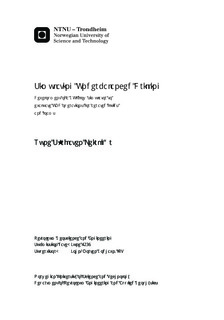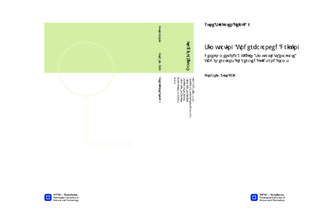| dc.description.abstract | As more oil fields mature, new methods are required to be able to drill additional wells without damaging thereservoir and to limit pressure related drilling problems. This can in most cases be solved by drillingunderbalanced, intentionally lowering the pressure below the reservoir pressure, allowing the well to flow.Systems available to drill underbalanced include; air, gas, mist, stable foam, foam with back-pressure, aerated mudand oils.The thesis focuses mainly on foam drilling and drilling with aerated systems. Both systems are pneumatic drillingfluids, this means they are a mixture of a liquid- and a gas phase. The main difference between foam and aeratedsystems is how the fluid structure is built up.When drilling with aerated fluids, no emulsifier or stabilization agent is added to the fluid, so the gas phase willnormally travel faster than the liquid phase due to gravitational forces. Foams are added foaming agents so thatthe fluid system remains stable by trapping the gas bubbles inside a liquid film, making the fluid act as normal onephaseflow. The thesis explains the theory behind, usage, design and operational procedures for these fluidsystems.In this master thesis an advanced fluid simulator was developed in MATLAB to simulate drilling with these fluids,and to design operational limits in the planning phase. The finished program is presented in a graphical interfacewhich easily allows the user to run even complex simulations regarding; well path, reservoir model, tubular- andfluid design.For the two-phase flow modeling eight different empirical pressure correlations were implemented in thesimulator. The first two-phase flow model described in the literature on flow modeling, was developed byPoettmann & Carpenter, and is one of the simplest models available. This model was included in two versions.Besides this model, two other models are included from each of the three main categories; neither slippage norflow regimes considered, only slippage considered, and; both slippage and flow regimes considered. The modelsthat consider both slippage and flow regimes, such as Beggs & Brill, are complex models which require muchcomputational force. However these models will often produce very reliable results.For foam modeling, six different empirical viscosity models were implemented. Einstein was the first to describefoam rheology mathematically, and his model is the simplest model included in the simulator. Some of the simplermodels included in the simulator produces output with much uncertainty, however more complex models such asSanghani produce more trustworthy results.Multiple simulations were run for foam and aerated system utilizing these models with a large range of varyinginputs. The results from simulations proved to provide reliable outputs, with deviations well within the expectedrange. | nb_NO |

